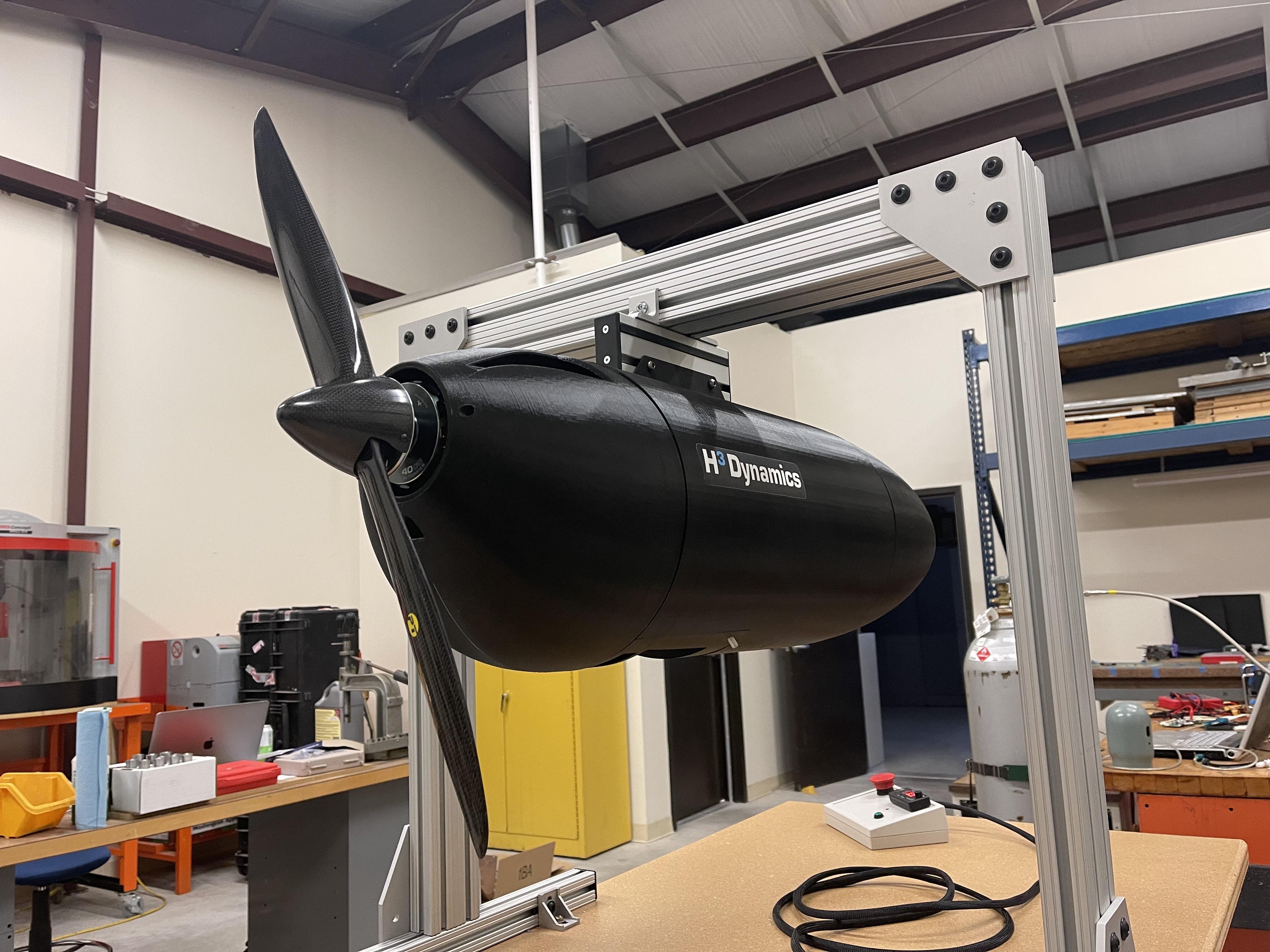
Singapore-headquartered H3 Dynamics has tested what it said is the first integrated hydrogen-electric powertrain nacelle, designed to enable distributed propulsion for a range of aircraft sizes.
Instead of a single centralized, fuselage-mounted fuel-cell system, the company’s hydrogen propulsion concept distributes multiple integrated powertrains in modular nacelles under the wing.
The design incorporates the hydrogen storage, fuel-cell system, hybrid battery pack and electric motor into a nacelle that can operate as a single propulsion unit or as part of a distributed propulsion system.
A swappable storage system supports both gaseous and liquid hydrogen and the design is scalable in size and number of nacelles to support propulsion requirements of unmanned and manned cargo and passenger aircraft.
“This is world’s first real, working propulsion system capable of being distributed on the wings of new zero-emission aircraft,” H3 CEO Taras Wankewycz said.
H3 is beginning with smaller unmanned platforms and plans to develop the Hywings H-25, a cargo drone with two powertrain nacelles and a 25-kg (55-lb.) maximum takeoff weight carrying a 5-kg payload.
H3 closed a $26 million Series B funding round in October 2021 and in December completed wind tunnel tests of a long-range unmanned hydrogen test aircraft in Toulouse. Flight tests are planned to begin in the first quarter of 2022 under the Mermoz program. H3’s hydrogen-electric propulsion work is being performed by its engineering centers in Toulouse and Austin, Texas.
